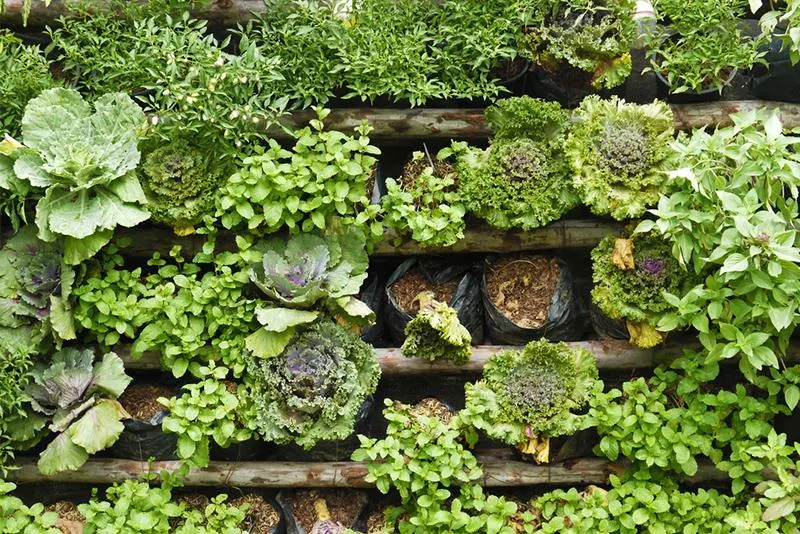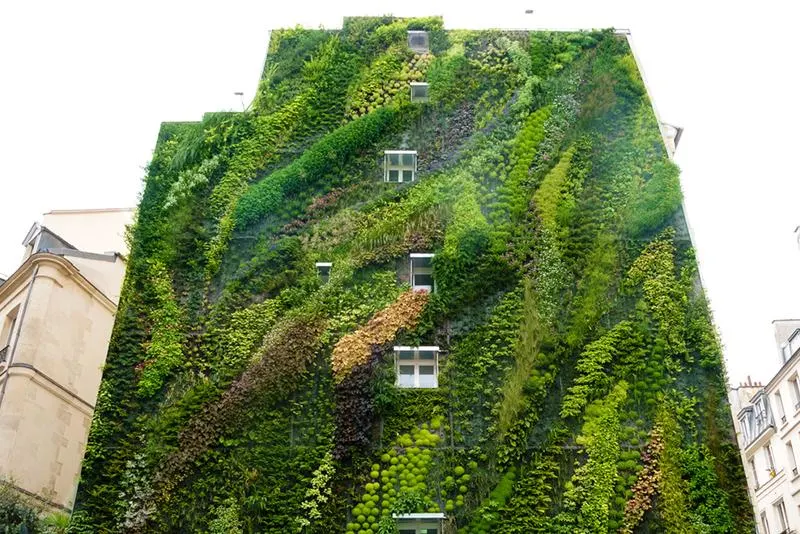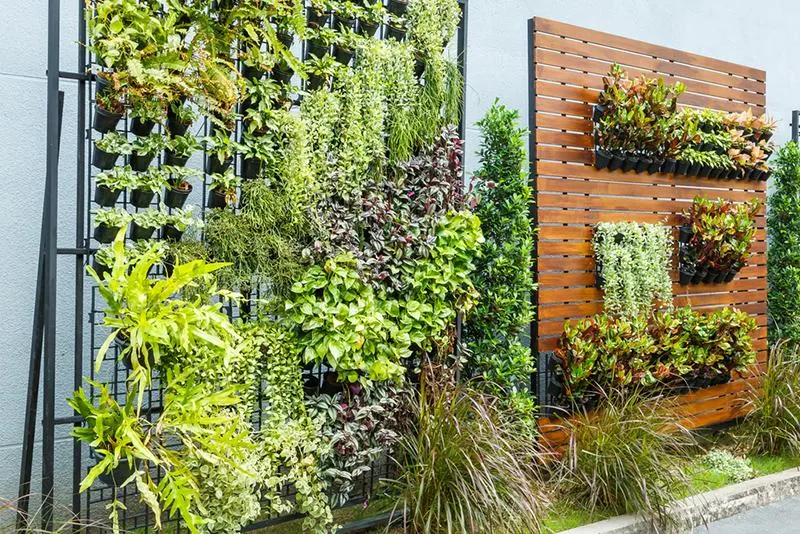May 20, 2015
Think Vertical: Ideas for the Vertical Garden
While the lavish gardens of yesteryear were lovely, for most Americans, they are no longer realistic. For nearly 39 million California residents tasked with mandatory water reduction, extravagant gardens could make you a target for water waste fines. For others, housing budget limitations or city-centered careers prevent manicured landscapes. But you don’t need an expansive yard or even a ton of water to maintain a lovely garden; instead think outside the (planter) box.
Vertical Herb Garden
If you love to cook, then you already know what a luxury it is to use fresh herbs instead of dried ones when seasoning your favorite dishes. Instead of having to dash to the market to buy yet another bushel of cilantro, plant your own with a vertical garden.
Use large glass canning jars as plant containers that are equal parts simple and chic. Hang the jars from a large wood panel or a few two-by-fours that are two to three feet long (depending on the space where you plan to hang them). Use small planter hangers or metal clamps to secure the jars to the wood.
While this vertical garden can be hung outdoors or right in your kitchen, choose the space carefully to ensure sufficient sunlight. Select herbs that you cook with often to get the most out of your herb garden — basil, Italian parsley, mint, cilantro and rosemary are all ideal options and they are pretty hardy, which is great if your thumb is more black than green.
Living Art
A living wall is the perfect complement to any outdoor room, balcony or patio where you have blank wall space to fill. If covering the entire wall in greenery is out of your budget, a DIY panel stacked with succulents is an affordable option that packs an equally alluring visual punch. To start, purchase or make a wood frame that has a layer of plastic mesh in the middle. The mesh should be wide enough to hold succulent clippings, but not too wide that they could fall out.
When it comes to selecting the plants to use, succulent clippings are best as they’ll have room to grow so the panel will eventually look thick instead of sparse. Harvest clippings from succulents you already have or you can also buy them online if you’re looking for a specific variety. You’ll need an average of 120 clippings to fill a 12-by-12-inch panel.
Once you’re ready to plant, fill the planter frame with a soil blend specifically designed for succulents or cactus. Make sure that the soil is tightly packed so it doesn’t fall out through the holes in the mesh. Plant clippings one by one in the soil and keep the panel on a flat surface for at least a week to allow the succulents to take root. After seven to 10 days, begin watering the succulents and continue to do so on a weekly basis.
Allow the plants at least a month to develop sturdy root systems before hanging up the panel. Always remove the plant panel when watering and allow water to drain fully before hanging again to prevent soil erosion.
Ready-Made Vertical Planting Systems
If DIY isn’t your thing, here are a few vertical garden systems that don’t require anything more than a green thumb to thrive:
Woolly Pocket: Plastic bottles get a second life as modular planter pockets
Root Pouch: Utilitarian saddlebag-style pouches made from recycled plastic bottles




